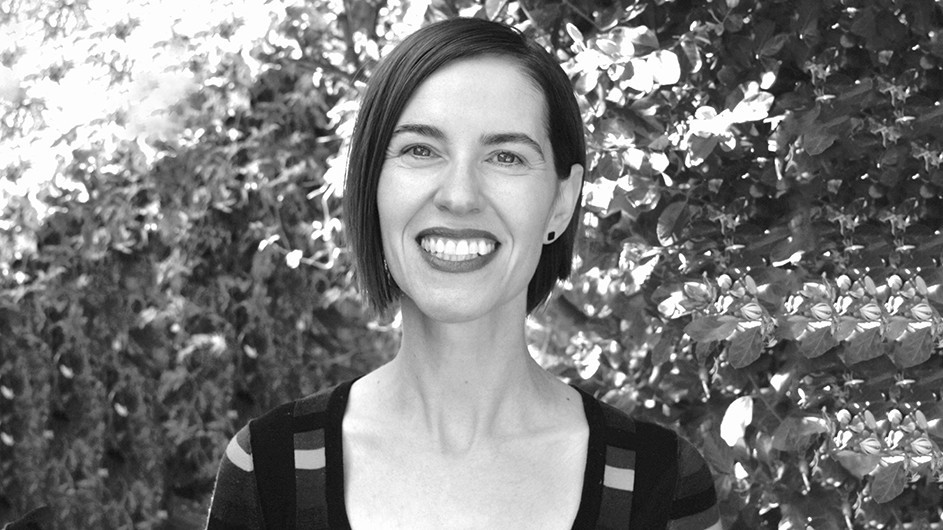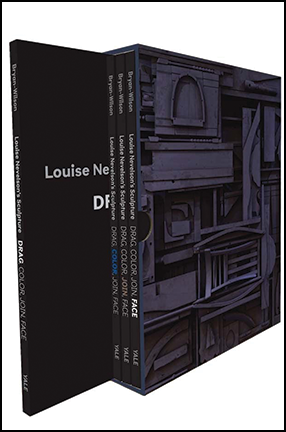Louise Nevelson’s Sculpture, Reconsidered
In Julia Bryan-Wilson’s book, the sculptor’s work is put in dialogue with marginalized makers and artists.

In Louise Nevelson’s Sculpture: Drag, Color, Join, Face, Julia Bryan-Wilson, a professor of art history and archeology, provides a rethinking of the art of Nevelson (1899–1988). A signature figure in postwar sculpture, this Ukraine-born, Jewish immigrant persevered in the male-dominated New York art world. Nonetheless, her careful procedures of construction—in which she assembled found pieces of wood into elaborate structures, usually painted black—have been little studied.
Organized around a series of key operations in Nevelson’s process (dragging, coloring, joining, and facing), the book comprises four slipcased, individually bound volumes. Both form and content thus echo Nevelson’s own modular sculptures, the gridded boxes of which the artist herself rearranged. By exploring how Nevelson’s making relates to domesticity, racialized matter, gendered labor, and the environment, Bryan-Wilson examines the social and political implications of Nevelson’s art. Bryan-Wilson also approaches Nevelson’s sculptures from her own perspective as a queer feminist scholar. She forges an expansive art history that places Nevelson’s assemblages in dialogue with a wide array of marginalized makers and artists.
Bryan-Wilson discusses the book with Columbia News, as well as books she’s read or is about to read, current projects, and her next dinner party guests.
How did this book come about?
It came about gradually over the course of a decade, as I pondered the art of Nevelson. I kept puzzling over her sculpture, which fascinated me. She is most well known for her scavenged-wood, grid-based, monochromatic assemblages, and I began to understand that she maintained an impressively stubborn commitment to experimenting within those parameters.
I had just finished my previous book on textiles, and was casting about for new topics when I was invited to deliver a keynote lecture on domesticity and feminism in the U.K. When I stood in front of similarly wood-based sculptures by the L.A artist Noah Purifoy, I had a revelation that Nevelson’s procedures of making might have been significant for entire genealogies of artists who assemble scraps to conjure new worlds.

During the research and writing of the book, were you ever surprised by anything new you learned about Nevelson?
One unexpected thing that I encountered in the months I spent digging through her archives at the Smithsonian Archives of American Art was the extensive repository of fan art that poets, artists, and dancers generated in response to her. It was moving to see how her work sparked outpourings of tribute. I also took many trips to see as much of Nevelson’s work as I could in person, including visits to museum basements and storage facilities. One surprise was how visibly the work ages—wood is a porous and finicky medium, and she used off-the-shelf paint—so I always learned a lot when I saw for myself the scuffs and flakes and splinters.
What books have you read lately that you would recommend, and why?
I have a long commute on the subway, so I’m always reading fiction in transit. I just devoured the novel Detransition, Baby by Torrey Peters. It is a compelling, juicy read that also subtly contends with under-explored facets of what it is to have an unruly body in a world so insistent on binary genderings.
What's next on your reading list?
I’m excited to read my brilliant colleague Rosalyn Deutsche’s new book, Not-Forgetting: Contemporary Art and the Interrogation of Mastery, which examines artistic practices that push back against masculinist universalism. The Art History Department at Columbia has a lovely tradition where all faculty get copies of each other’s new books so we can stay abreast of each other’s work. Rosalyn has been one of my biggest inspirations, and I am so honored to work alongside her now.
What are you currently working on?
I’m co-curating, with the Brazilian curator Adriano Pedrosa, an exhibition at the Museu de Arte de São Paulo, Histórias da Diversidade LGBTQIA+. In English, we’re calling it Queer Histories. The exhibition opens in December 2024, and will be the centerpiece of a sprawling group show anchoring a year dedicated to LBGTQIA+ art and activism at the museum. That project is taking up the bulk of my attention, but I’m also finishing essays on a variety of topics, including an eccentric investigation into telepathy, feminism, and art during the Cold War.
What are you teaching this semester?
Two classes—Handicraft and Contemporary Art, and Feminist Pedagogy. In the latter class, graduate students are developing their own syllabi; it’s exciting to see how a new generation of sexuality studies is being enacted. In my handicraft class, we are taking advantage of the wealth of material in New York, with a visit to see shows of the Filipina textile artist Pacita Abad and the Diné (Navajo) weaver Melissa Cody at MoMA PS1.
Which three scholars/academics, dead or alive, would you invite to a dinner party, and why?
This question is overwhelming. To narrow things down, I will choose only from thinkers with Columbia connections, who could perhaps provide some guiding wisdom for me about how to navigate this institution: Allen Ginsberg (who was twice expelled as an undergraduate), Zora Neale Hurston (who graduated from Barnard and did graduate work in anthropology), and Edward Said (who was a professor of comparative literature). All three were also poetic storytellers and lovers of music, so I’d be thinking about what kind of playlist to put on, for sure.